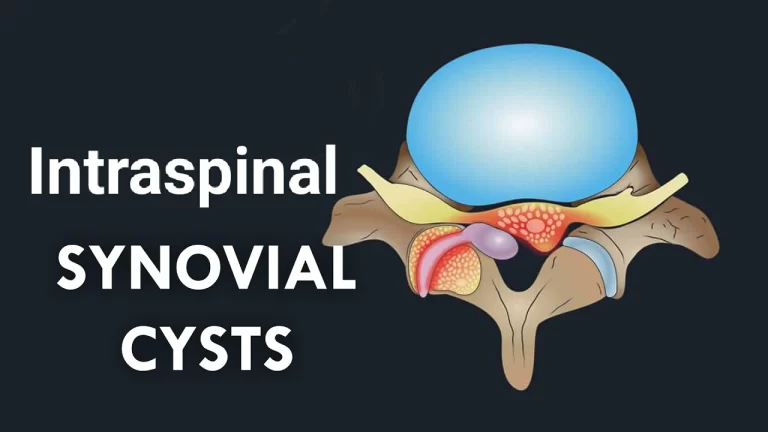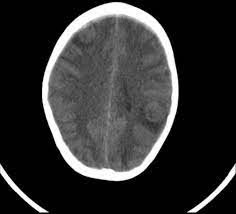Central Nervous System Vasculitis (Cerebral vasculitis)
Central nervous system (CNS) vasculitis identifies that blood vessel walls in the brain and spine are inflamed (swollen). This inflammation may be caused by different types of conditions and illnesses. CNS vasculitis is serious but treatable.
Table of Contents
What is vasculitis?
- Vasculitis is the inflammation (swelling) of the blood vessels, the network of empty tubes that bring blood throughout the body.
- Vasculitis can affect very tiny blood vessels (capillaries), medium-sized blood vessels (arterioles and venules), or large blood vessels (arteries and veins).
- If blood flow in a vessel with vasculitis is decreased or stopped, the parts of the body that receive blood from that vessel start to die.
What is central nervous system vasculitis?
Central nervous system (CNS) vasculitis is inflammation of blood vessel walls inside the brain or spine. (The brain and the spine make up the central nervous system.) CNS vasculitis frequently happens in the following situations:
- Accompanied by other autoimmune diseases namely systemic lupus erythematosus, dermatomyositis, and infrequently, sarcoidosis and rheumatoid arthritis.
- Infection, like viral or bacterial.
- Systemic (affecting the whole body) vasculitic disorders, which involve granulomatosis with polyangiitis GPA), eosinophilic
- granulomatosis combined with polyangiitis (EGPA), microscopic polyangiitis, cryoglobulinemic vasculitis, and Behçet’s syndrome).
- It may also happen without any connected systemic disorder.
- In this case, the vasculitis is only constricted to the brain or the spinal cord and it is referred to as primary angiitis of the CNS (PACNS).
Is central nervous system vasculitis dangerous?
- CNS vasculitis is a serious condition.
- The inflamed vessel wall may stop the flow of oxygen to the brain, causing a loss of brain function and ultimately strokes.
- In some cases, CNS vasculitis is life-threatening. It is necessary to get medication for this condition as soon as possible.
What causes vasculitis?
- In most cases, the particular cause is unknown, but the immune system (which helps keep the body healthy) plays a vital role.
- While the immune system generally works to protect the body, it may sometimes become “overactive” and attack the body.
- In most cases of vasculitis, something causes an immune or “allergic” infection in the blood vessel walls.
- Substances that cause allergic reactions are known as antigens.
- Sometimes certain medicines or illnesses may act as antigens and start this process.
Symptoms of cerebral vasculitis
Symptoms of vasculitis involve:
- Skin rashes.
- Fatigue (tiredness).
- Weight loss.
- Weakness.
- Fever.
- Joint pains.
- Abdominal (stomach) pain.
- Kidney problems (including dark or bloody urine).
- Nerve problems (including numbness, weakness, and pain).
- Severe headaches that last a long time.
- Strokes or transient ischemic attacks (“mini-strokes”).
- Forgetfulness or confusion.
- Weakness.
- Problems with eyesight.
- Seizures.
- Encephalopathy (swelling of the brain), may manifest as a change in mood or personality and reduces the level of consciousness.
- Sensation abnormalities.
How is vasculitis diagnosed?
The diagnosis of vasculitis, including CNS vasculitis, is dependent on a person’s medical history, symptoms, a complete physical examination, and the results of special laboratory tests. Blood abnormalities that are found in vasculitis involve:
- Anemia (a shortage of red blood cells).
- A high white blood cell count.
- A high platelet (which permits blood to clot) count.
- Kidney or liver problems.
- Elevation of inflammatory markers.
- Special markers in the blood may be present in particular types of vasculitis.
- (In PACNS, when the vasculitis is only confined to the brain or spinal cord, the above symptoms and signs are frequently lacking and individuals see the symptoms of CNS vasculitis only.)
- Other tests can involve X-rays, tissue biopsies (taking a sample of tissue to study under a microscope), and blood vessel scans.
- A doctor might also want to examine the spinal fluid to see what is causing the inflammation, through a procedure known as a lumbar puncture or spinal tap.
- This test is frequently performed in CNS vasculitis.
- Other essential tests involve magnetic resonance imaging (MRI), computer tomography (CT), or angiogram of the brain.
- An angiogram may show which blood vessels are narrowed.
- Because other conditions may cause some of the equal brain vessel abnormalities as CNS vasculitis, a brain biopsy is a one and only way to make a diagnosis.
- A brain biopsy may characterize CNS vasculitis and other diseases that can have similar features.
How is central nervous system vasculitis treated?
CNS vasculitis is generally treated in stages.
- The initial stage is identified as induction therapy.
- Here high-dose steroids are generally administrated, frequently intravenously, with or without other immunosuppressive medications like cyclophosphamide or mycophenolate mofetil medication that reduces the immune system’s response to autoimmune diseases.
- Then steroids are tapered off over 6th month.
- When a person is in respite they enter a maintenance phase where cyclophosphamide (if used in the induction phase) is changed to other immunosuppressive medication like mycophenolate mofetil.
- Low-dose steroids can be used in the maintenance phase.
- Treatment must be carried on for a prolonged period, sometimes for life.
- If the patient has another illness (like lupus) or systemic vasculitis, then treatment should also involve guidelines for the specific condition.
Side effect
- The drugs utilized to manage Central Nervous System Vasculitis have potentially severe side effects, like as lowering the body’s capability to fight infection, and potential bone loss (osteoporosis), among others.
- Thus, it is important to see the doctor or physician for weekly checkups.
- Drugs can be defined to offset side effects. Infection prevention is also necessary.
- Speak to the doctor or physician regarding obtaining pneumonia vaccination, a flu shot, and/or shingles vaccination, which may reduce the risk of infection.
- Physical and occupational treatment may be important for persons with motor or gait deficiencies.
How Is CNS Vasculitis Prevented?
- Because Central Nervous System Vasculitis is frequently connected with a triggering condition or infection, immediate therapy of underlying conditions and avoiding infections is the perfect preventive strategy.
- To save yourself from the familiar infections that can generate vasculitis, bring these actions:
- Vaccinate yourself and the kids against typical viruses namely measles, rubella, mumps, and chickenpox.
- If a person is touring foreign destinations, ask the doctor or physician if a person needs vaccinations against locally prevalent bacteria, viruses, or protozoa.
- Wash your hands and practice fine hygiene to control the spread of viruses and bacteria.
- Instruct the kids on these practices, also. Do not transfer food, utensils, or beverages.
FAQ
CNS vasculitis is a serious condition. The inflamed vessel wall can stop the flow of oxygen to the brain, causing a loss of brain function and ultimately strokes. In some cases, CNS vasculitis is life-threatening. It is necessary to take treatment for this condition.
A corticosteroid drug, namely prednisone, is the most usual type of drug prescribed to control the inflammation connected with vasculitis. Side effects of corticosteroids may be severe, specifically if a person takes them for a long time.
Vasculitis is a rare condition that may be difficult to diagnose, however, many individuals with vasculitis recover and go on to live healthy, normal lives. Particular diagnosis and effective treatment are critical to prevent long-term or particular damage to the body and affected organs.
Vasculitis is treatable, and many patients achieve remissions through treatment. It is necessary to balance the types of medications important to control the disease and the risk of side effects that those medicines frequently bring.
If a person does not need a special diet, the person should aim to cut down on starchy foods – bread, potatoes, rice,
and pasta, replacing these with fresh fruit and vegetables. A person should also avoid processed food and grain-fed meat.





